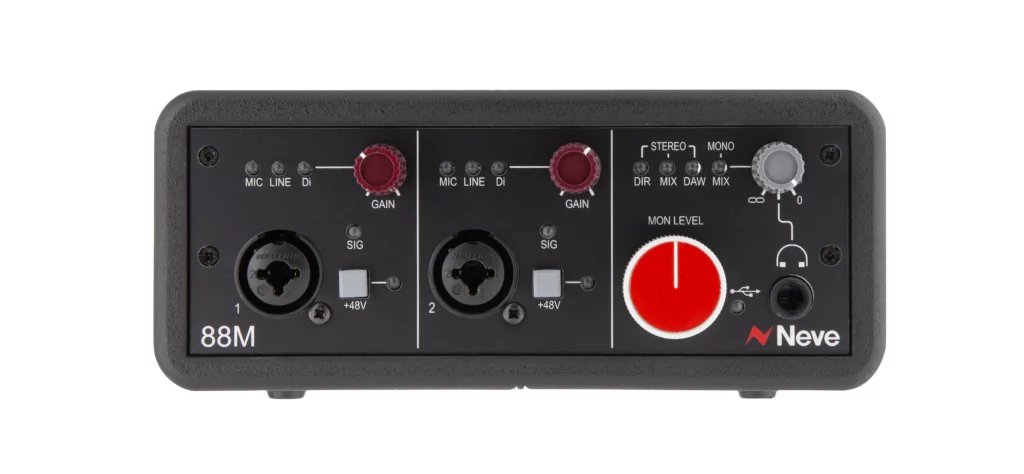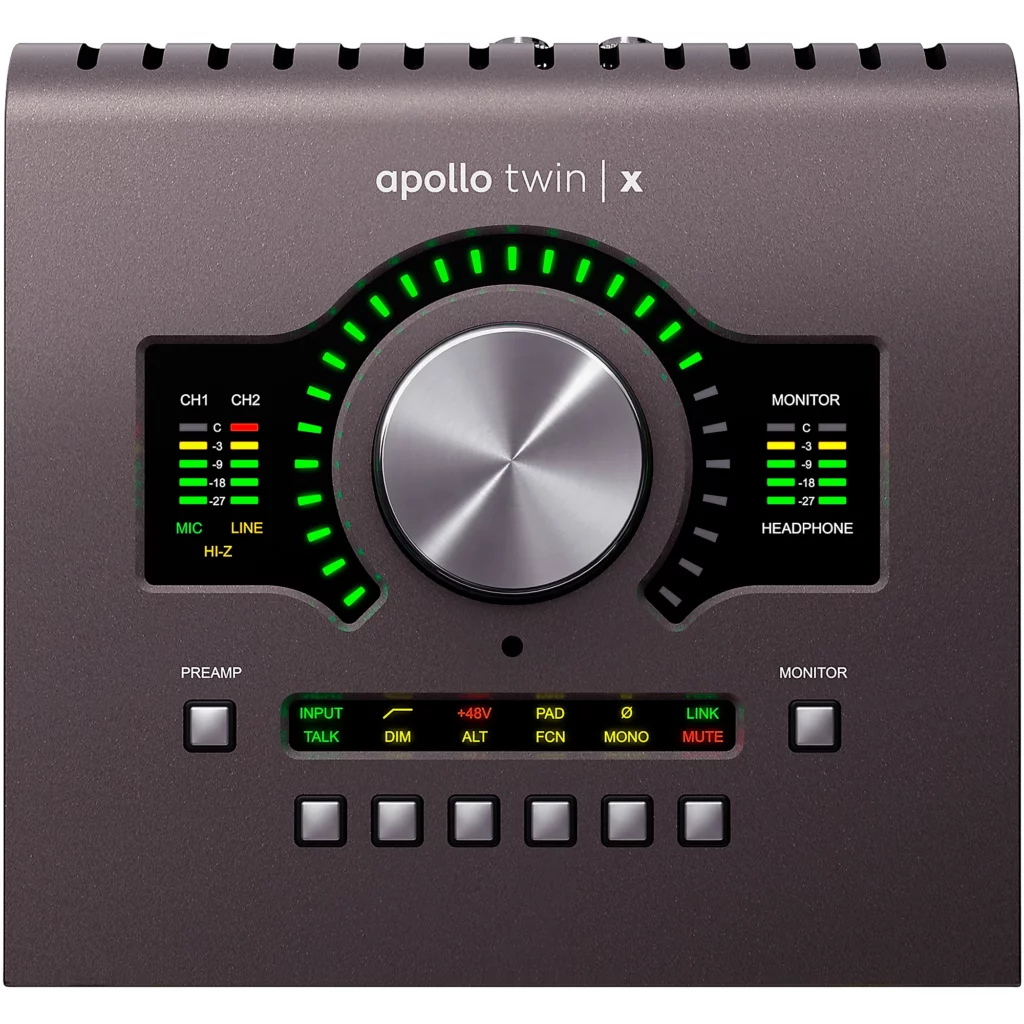
Numerous brands have made their mark in the vast expanse of the audio interface market. Yet, when Neve, celebrated for their iconic mixing desks, introduced the Neve 88M, it stirred the music industry with admiration and debate.
On the other hand, the Apollo Twin has been a linchpin in studios since 2014. The Apollo Twin X’s 2019 release further highlighted Universal Audio’s expertise.
With over 15 years in music production, collaborations with Grammy-nominated talents, and 25 years as a songwriter and guitarist, I’ve engaged with a diverse range of gear. These experiences grant me a layered perspective I enthusiastically share on SongProductionPros.com.
Today, we’ll delve into the Neve 88M vs. Apollo Twin X face-off, sharing comprehensive insights, reviews, and personal stories with these audio titans. Whether you’re a budding musician or a seasoned pro, this article holds valuable gems for you.
In a Nutshell
When you square off the Neve 88M with the Apollo Twin X, it’s a meeting of two titans in audio interfacing.
The 88M by Neve delivers unmatched analog warmth thanks to its famed preamps. Meanwhile, the Apollo Twin X is a testament to versatile digital capabilities, a cornerstone heard in studios for years.
For enthusiasts chasing that quintessential Neve sound in an interface, the 88M shines. But, if you lean towards the versatility of digital processing and monitoring, the Apollo Twin X wears the crown.
Drawing from my extensive journey in music, pairing the Neve 88 M’s preamps with the workflow of Apollo Twin X creates a sonic synergy that’s nothing short of exceptional.
Table of Contents
Table of Contents
Analog vs. Digital: The Eternal Debate
Audio enthusiasts have often split into two sects: analog purists and digital advocates. These differing philosophies about audio recording stem from technology and personal perception. One captures continuous sound signals, while the other opts for discrete ones. But which truly stands out? Let’s explore.
The Core of the Controversy: What’s All the Noise About?
Let’s break it down. This debate isn’t a recent phenomenon. It’s all about perceived sound quality, musical authenticity, and the unadulterated joy of tunes. Let’s look at the champions of each camp:
- Team Analog: These purists argue that analog recordings, with their continuous, natural reproduction of sound waves, retain the nuances and idiosyncrasies that give music its soul.
- Team Digital: Advocates here appreciate the precision and clarity of digital recordings. They value the elimination of background noise and distortion, coupled with the ease and consistency offered by digital recall.
Weighing the Options: Analog vs. Digital
The debate isn’t solely about tech specifics or what the purists endorse. It boils down to discerning the difference, merits and challenges of both forms in practice. As artists and technicians, we chase the elusive perfect sound—be it the comforting warmth of vinyl or the pristine clarity of a digital masterpiece. Here’s a concise look at the pros and cons to guide you before we jump into the meat of our comparisons.
Analog: The Highs and Lows
- A Gentle Touch: Analog gear tends to be more forgiving. Even when pushed to its limits, it produces a mellower, more musical clip. Crafting the desired tones with analog is often more intuitive.
- Authentic Warmth: Analog captures a warm, full-bodied sound that stays true to the live rendition.
- Noise Concerns: Analog devices can introduce a bit more background noise—like hisses and hums.
- Size & Upkeep: Analog setups, being bulkier, demand more real estate and consistent maintenance.
Digital: The Highlights & Hitches
- Pristine Precision: Digital audio is sharp and malleable, ripe for endless tweaks with plugins and effects.
- Consistency is Key: Digital tools offer repeatable, reliable outputs. The ease of recalling past sessions is a godsend for many in the production scene.
- Technical Hiccups: Digital isn't without its quirks—from the occasional aliasing to jitter and the rather abrupt digital clipping.
- Update Reliance: A heavy dependency on software translates to being as efficient as the latest update, with compatibility issues occasionally throwing a spanner in the works.
Hybrid Harmony: A Fusion Approach?
The silver lining in today’s music production? No need to pledge allegiance to one camp. Artists worldwide are harmonizing analog and digital strengths.
Consider this: many purist musicians swear by recording vocals and instruments via analog, valuing the raw authenticity they feel it brings. But post-recording, they transition to digital domains for precision edits.
Conversely, if synthesizers and samples are your playground, a wholly digital realm might be your sweet spot.
Audio Interface Battle: Analog’s Neve 88M vs. Digital’s Universal Audio Twin X
Embarking on a quest for the ideal audio interface? You’ve zeroed in on two industry titans. This analog vs. digital rivalry has intrigued many before you.
Pitching first, we have the Neve 88M, echoing the grandeur of celebrated large-format consoles reincarnated into a sophisticated, analog desktop computer package.
Then there’s the Universal Audio Twin X. Envision an entire analog recording hub meticulously digitized, crafted to complement your contemporary setup.
For those itching for this head-to-head contest, we’re here to shed the marketing gloss and delve deep into the nitty-gritty of both devices. We understand the significance of your investment.
Brace yourself as classic allure meets cutting-edge precision. Here’s the showdown!
Neve 88M Spotlight (Analog)
The Neve 88M USB audio interface enters, a testament to analog heritage.
Embracing Neve's analog heritage, the 88M boasts genuine 88R console preamps enriched by Marinair transformers, delivering unparalleled sound. Crafted for those valuing legacy and excellence in a compact design.
- Embodies the illustrious Neve sound, providing legendary console quality in an elegant, user-friendly desktop format.
- Delivers a warm and detailed tone, adding depth to any audio.
- Combining portability with reliability, it's an apt choice for mobile recording. ADAT expansion enables up to 10 mic preamps & 10 monitor outputs (though external units are necessary).
- Its Achilles' heel? Limited I/O options, potentially off-putting for those seeking expansive input/output capabilities. Factor in the ADAT expansion, and costs can accrue.
- Missing DSP processing and comprehensive software integration might dissuade those craving intricate sound control.
- The price point might stretch some budgets.
Key Features & Specifications:
- Mic Preamps: Two authentic Neve mic preamps, augmented by unique Marinair transformers, span a gain range of +21dB to +68dB—this is the source of its iconic sound.
- Converters: Onboard are superior ESS converters, providing 24-bit, 192 kHz resolution, epitomizing clarity, and intricate sound reproduction.
- Connectivity: Featuring USB 3.0 compatibility, it serves both Mac and PC users. Mac enthusiasts get a bonus: automatic core audio recognition sans extra drivers.
- Design: Encased in a durable metal frame adorned with premium tolex, it’s where elegance meets endurance.
- Expansion: ADAT expansion allows for eight input channels and ten monitoring outputs, streamlining scalability.
- Outboard Gear Integration: Standout feature? Individual sends and returns for each preamp. This facilitates seamless integration of external equipment, post-preamp but pre-converters—a rarity among interfaces.
Universal Audio Twin X Highlight (Digital)
The Universal Audio Apollo Twin X is poised and ready, emerging from the digital realm and one of the best-selling audio interfaces on the market.
Heralding from Universal Audio's digital excellence, the Apollo Twin X seamlessly marries vintage analog essence through Unison-fueled preamps with cutting-edge digital clarity.
Enjoy analog emulation of giants like API and Neve, all while basking in the state-of-the-art digital prowess. This is where legacy meets the future in sound technology.
- The Twin X's adaptability is its crown jewel. Coupled with the UAD Console's prowess, it's a go-to for sound professionals.
- It delivers digital sound with unmatched clarity, excelling across genres.
- Seamless DAW integration enhances workflow. With Luna, recording to mixing is smooth and has low latency.
- Long-term growth is facilitated via compatibility with other Apollo devices or UAD satellites.
- Thunderbolt 3 reliance and an external power necessity may restrict mobility.
- The cost of UAD plugins can be a deterrent.
- Potential stability issues may arise for third-party software or hardware users.
Key Features & Specifications:
- Mic Preamps: Twin X possesses two Unison-fueled mic preamps, replicating the essence of classic analog devices via DSP. These preamps adjust impedance to emulate legendary preamps from giants like API and Neve. However, plugins come at an extra charge and can fluctuate based on promotions.
- Converters: Equipped with top-tier converters offering 24-bit, 192 kHz resolution, and a noteworthy dynamic range of up to 127 dB.
- Connectivity: Embracing tomorrow, the Apollo Twin X leverages Thunderbolt 3 for both Mac and Windows, promising superlative low-latency performance. Note: it’s not bus-powered and needs an external power source.
- Processing Power: UAD-2 DUO or QUAD Core processing equips users to deploy UAD plugins in real-time or offline.
- Software Library: Access to the lauded UAD software library, showcasing plugins from industry giants. While a core set is included, many require an upgrade, potentially increasing expenses.
- DAW Integration: the acclaimed DAW, Luna, is included, rivaling other premium offerings.
- Monitor Controls: Stellar monitor controls featuring mono summing, DIM, a talkback mic, and more.
- Expansion: Built to evolve, integration with other Apollo devices, and ADAT compatibility for preamp expansion (limited to input).
- UAD Console Software: Bundled UAD Console software ensures enhanced routing flexibility and recording template drafting.
Audio Comparison
Comparing two leading audio interfaces means diving deep into the details. So, let’s go through the setup I used, ensuring this comparison is fair and transparent.
Microphone Chosen:
- I worked with a FET-47 type condenser microphone, which I assembled from a kit I got from microphone-parts.com.
Recording Approach:
- Sound Sources:
- My sessions involved vocals, acoustic guitar, and electric guitar recordings.
- Electric Guitar Techniques:
- For the electric guitar, I opted for two methods: a direct recording and one using the Strymon Iridium Amp & IR Cab simulator pedal.
- Using the Strymon Iridium Pedal:
- Alongside the Strymon Iridium, I used several pedals: the Pigtronix Constellator for a touch of echo, the Pigtronix Philosopher’s Tone for controlling dynamics, and occasionally, the Wampler Moxie for some distortion – though not always activated in my recordings.
- About the Samples: I included solo performances for direct comparison and the same performances in the context of an arrangement. This dual approach gives a feel of the raw sound and how it fits into a musical setting.
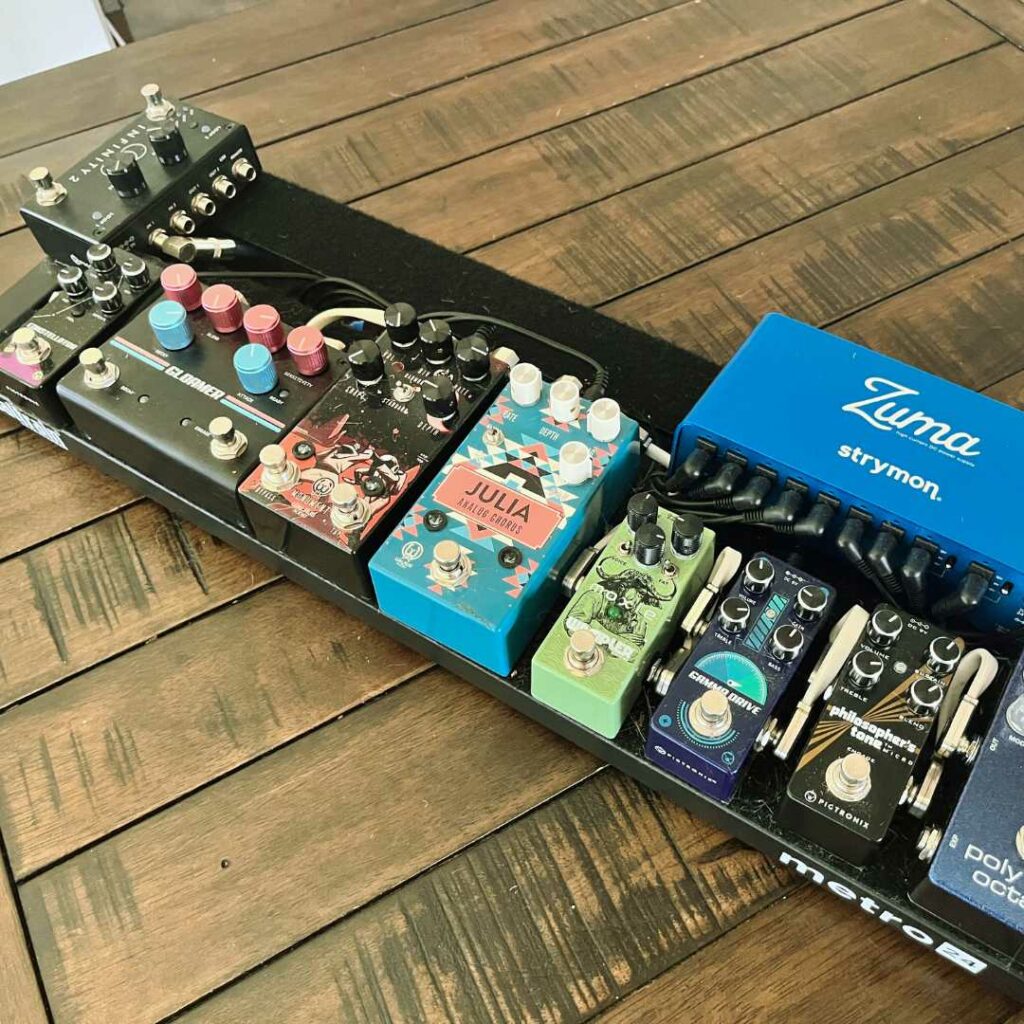
Interface Showdown: I set the digital capabilities of the Apollo Twin X’s 88RS Unison Preamp against the analog warmth of the 88M. The goal? To see how the modern digital approach compares to its traditional analog counterpart.
For the most transparent representation of this test, it’s a good idea to use quality headphones or speakers. This will help you pick up on the subtle differences and nuances. Enjoy the experience!
Sound Examples:
Vocals:
Acoustic Guitar:
Electric Guitar:
Pricing Breakdown
Choosing the right studio gear is a balance between cost and quality. The Neve 88M and the Apollo Twin X bring much to the table. Still, it’s essential to understand the value proposition of each.
- Neve 88M: Priced at $1,245 USD, the Neve 88M may initially seem a tad high for a two-channel USB audio interface. But here’s the thing: this interface offers the most cost-effective route to achieving that authentic Neve sound in your studio. To put things in perspective, a single-channel Neve 88RLB 500-series preamp alone goes for around $790 (and that’s without adding the separate 500-series chassis). This makes the 88M a value-packed option for those eager to tap into the Neve magic.
- Apollo Twin X: The DUO model is set at $999, offering a seemingly more budget-friendly alternative to the Neve 88M. The QUAD, however, is pricier at $1,499. A distinct advantage for Apollo Twin X users is the bundled Luna DAW for Mac users (not available for Windows at the time of this writing). But remember, while Luna offers a robust foundation, expanding its capabilities with additional extensions and plugins can see costs rise. UAD’s alluring lineup might lead you down a path of added investments, so budget accordingly.
The Verdict:
Your choice boils down to your preferred workflow. Suppose you dream of integrating the unmistakable Neve essence seamlessly into your recordings without any fuss. In that case, the 88M offers a direct avenue. On the other hand, if a more integrated system with DAW flexibility and the potential for expanding into UAD plugins aligns with your production style, the Apollo Twin X stands out as a compelling contender.
Diving into the Preamps
The preamp is the soul of an audio interface. It colors and shapes the sound, making it crucial to your final recording. Pitting the Neve 88M against the Apollo Twin X is like a showdown between two audio titans, each unit boasting its distinct charm.
- Neve 88M: The 88 M’s preamps come loaded with the magic of Marinair transformers – these aren’t your average transformers. They’re the heartbeat of many iconic albums from Neve’s famed 88R recording console. These ensure your recordings ooze warmth, clarity, and rich musicality. The 88M offers a direct ticket to that legendary Neve aura.
- Apollo Twin X: The Twin X shines with its Unison technology. This isn’t just about emulating sounds; it’s about replicating classic analog preamps’ nuances. That includes legends like Neve, API, Manley, and SSL. Want the crispness of an API one day and the Neve warmth the next? The Twin X makes it a breeze.
The Verdict:
Deciding is challenging here. The Neve 88M stands as a nod to timeless sound quality, while the Apollo Twin X champions adaptability. If it’s the authentic Neve character you’re after, the 88M is your best bet. But suppose flexibility in sound shaping, flipping between various iconic tones is what you seek. In that case, the Apollo Twin X might be your perfect match.
Ultimately, both are top-tier choices, and your pick should align with your studio goals and the sound you envision.
Breaking Down Features & Build
Besides the preamp’s soul, an audio interface’s body—its features and build—plays a significant role in how you interact with it and the tools it offers. Let’s see how the Neve 88M and Apollo Twin X stack up regarding these aspects.
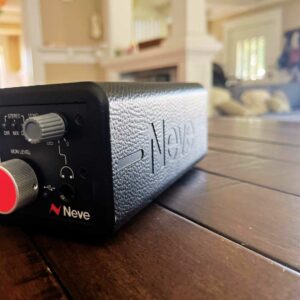
- Neve 88M: The 88M stands out with its send and return options for each preamp. This lets users record with analog gear before hitting the converters, a feature hard to come by in most modern interfaces. On the looks and build side, the 88M’s exterior uses the same material found on Neve’s iconic recording consoles. With the “Neve” name stylishly carved on its side, this device carries a legacy look that speaks of its quality heritage.
- Apollo Twin X: The Twin X brings in the “Console” software, giving users a handy platform to manage plugins, tailor headphone mixes, and tweak settings. Its all-metal body feels sturdy, and the solid feel of its central volume knob and buttons gives a reassuring touch. What catches the eye is its clear input and output meters, giving users an instant visual on their sound levels—a detail that’s both handy and looks sharp.
The Verdict:
If you love the old-school feel of working with analog gear and want a piece of recording history in your workspace, the Neve 88M is your jam. On the other hand, if you’re into the contemporary scene, valuing a mix of sleek looks and versatile digital tools, the Apollo Twin X might be your go-to.
Ultimately, it boils down to your musical journey—whether you’re nodding to past legends or embracing the tech-forward present.
Diving Into Monitoring Features
Monitoring is critical in recording and mixing. Quick, precise control can make or break a session, especially when you need to tweak on the fly to keep the artist in the zone. How do the Neve 88M and Apollo Twin X match up in this department?
- Neve 88M: In my time with the Neve 88M, I found it leans more towards simplicity. It’s easy to use and straightforward, making it a top pick for home producers, especially if you’re mostly recording yourself. Its push-button monitor control means you spend less time fiddling and focusing more on the sound.
- Apollo Twin X: The Twin X steps up with its range of features. The device offers tools like DIM, mute, mono summing, and monitor switching. But the blend with the Console software truly makes it shine. Together, they open up advanced monitoring routes, giving you detailed control right in your hands.
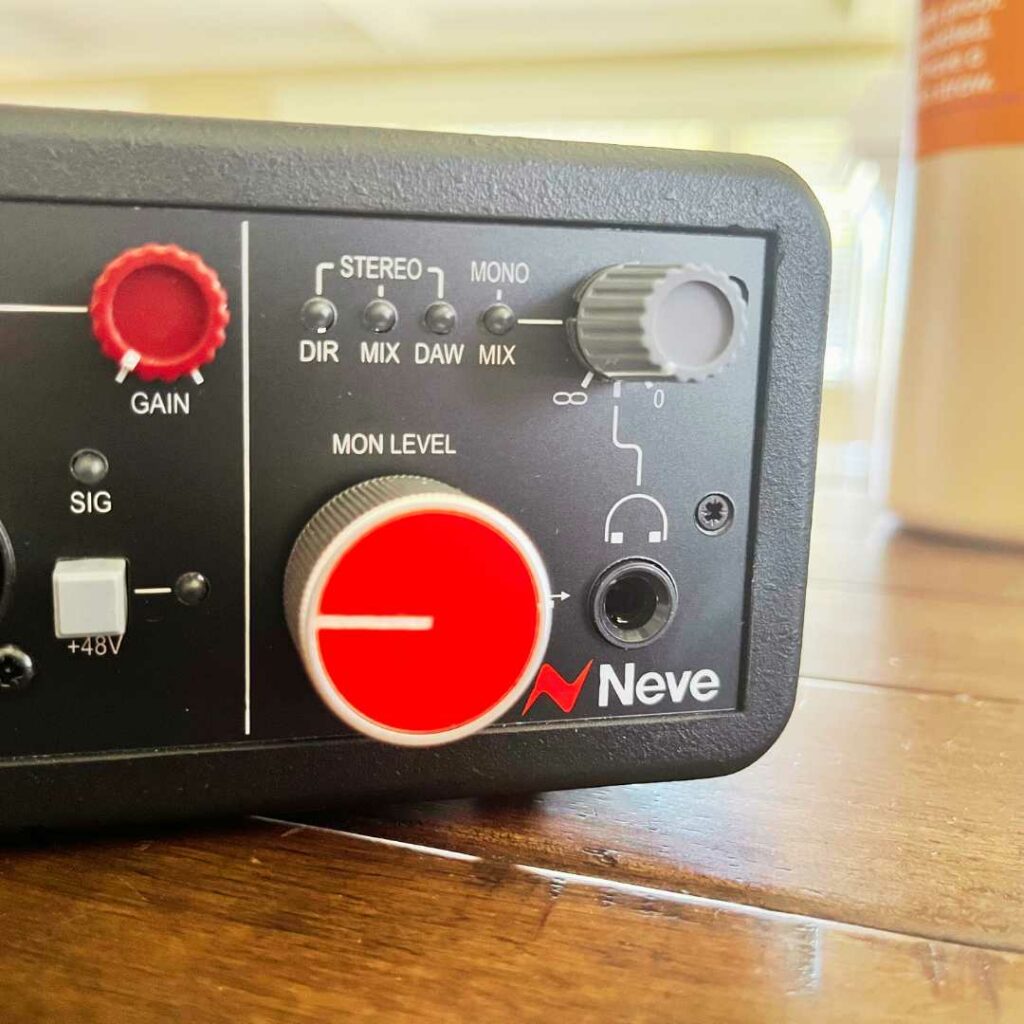
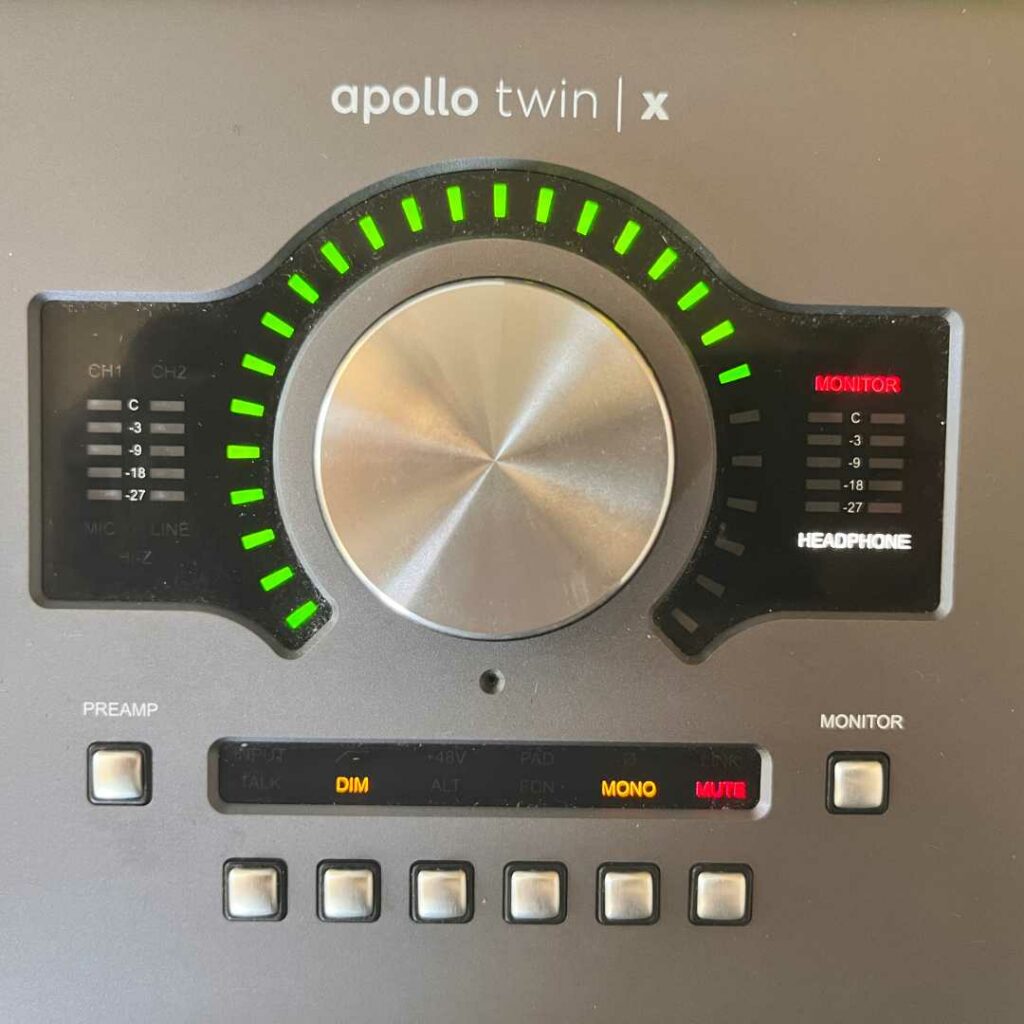
The Verdict:
If you’re all about straight-to-the-point, no-nonsense control, the Neve 88M is your match. But suppose you’re hunting for a tool that offers depth and flexibility in monitoring. In that case, the Apollo Twin X clearly stands out.
Your choice really depends on your work style—whether you like keeping things simple or diving deep into customization.
Assessing the Headphone Amps
Let’s talk about headphones. Some interfaces offer an output for convenience, which might not give you the best sound quality. Others, however, are built with precision, giving you enough clarity to mix and master just with headphones. Here’s how the Neve 88M and Apollo Twin X compare:
- Neve 88M: Based on my time with it, the Neve 88M’s headphone output feels slightly compressed, with some distortion. Remember, this is just my personal take.
- Apollo Twin X: I’ve spent quite a bit of time with the Apollo Twin X. It’s impressive. I’ve mixed and mastered using it, and it’s always delivered top-notch results.
The Verdict:
The Apollo Twin X takes the lead when it comes to crisp, clear headphone sound. This headphone amp is the one if you’re looking for a headphone experience that’s up to pro audio standards.
Conversion Clarity Showdown
When we’re talking audio, the magic happens in the transition between analog and digital and back from digital to analog. It’s about capturing every sound detail and playing it back with accuracy. This conversion can make or break your recording and playback experience.
- Neve 88M: Having spent time with the Neve 88M, I can say its conversion quality is top-tier. The recordings sound honest and detailed; listening through monitors is a treat. The sound sounds open, spacious, and has outstanding clarity.
- Apollo Twin X: The Apollo Twin X doesn’t disappoint, either. Its conversion is solid and reliable. But, when placed side by side with the Neve 88M, it feels slightly subdued in its openness during playback.
The Verdict:
For the utmost clarity and a more open sound, the Neve 88M takes the lead. I feel more relaxed and less stressed in playback.
Ease of Setup Showdown
Getting into the flow of a recording studio or session is easier when you don’t have to wrestle with power and cables. It’s not just about how your gear sounds but also about how straightforward and hassle-free it is to use.
- Neve 88M: The Neve 88M stands tall with its simplicity. Powered directly through a USB-3 connection, it rids you of any external power supply concerns. Mac users get an additional perk: the 88M is plug-and-play as it’s recognized as core audio. And to top it off, it comes packaged with all the necessary cables, making your life a bit easier.
- Apollo Twin X: On the other hand, the Apollo Twin X requires a bit more legwork. It leans on an external power supply, meaning one more cable and plug point to think about. And while its Thunderbolt 3 connection ensures high-speed data transfer, remember that the necessary cable isn’t in the box. You’ll need to snag one separately.
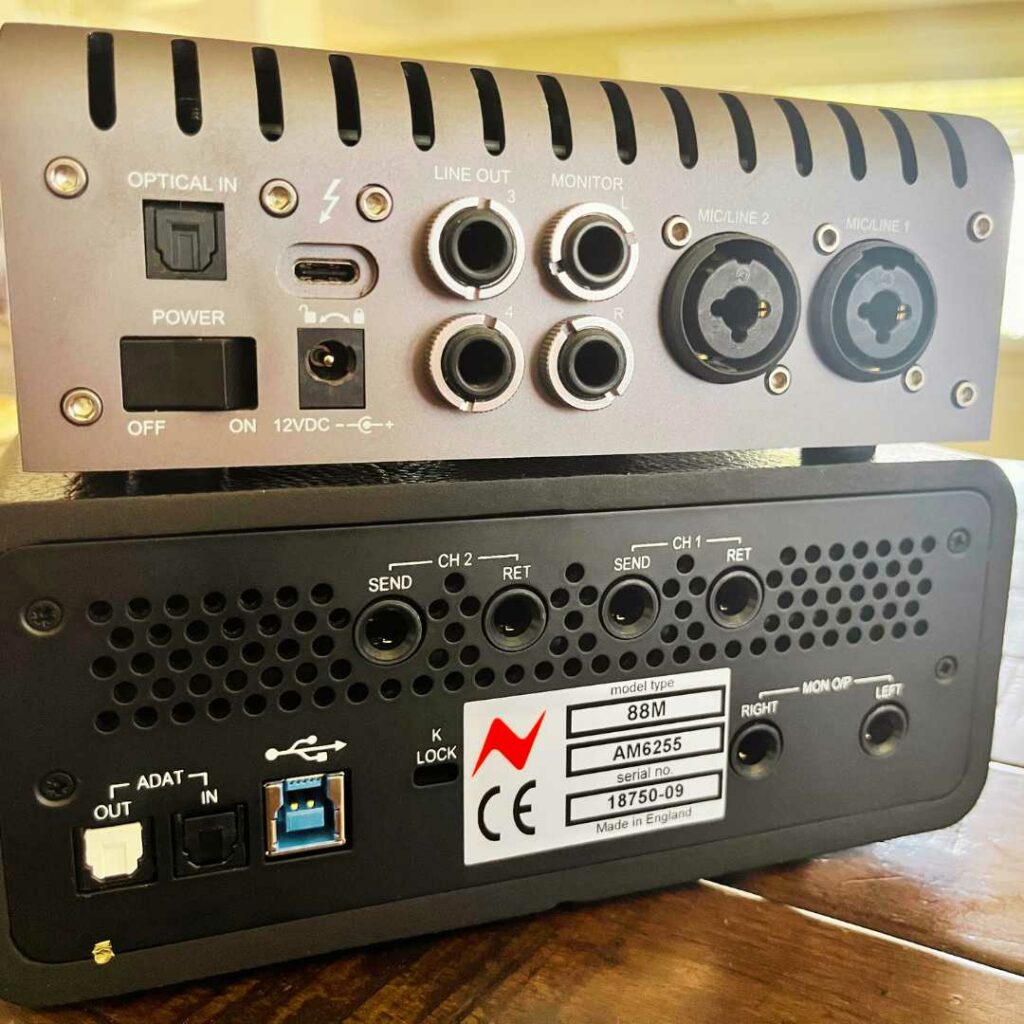
The Verdict:
Regarding hassle-free setup, the Neve 88M gets the nod. Cutting down on setup complexities lets you dive straight into the creative process without getting tangled up. It’s all about making music, not managing cables.
The Power Duo: Neve 88M & Apollo Twin X Together
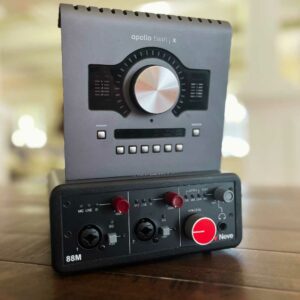
Considering the hybrid approach discussed at the beginning of the article, I embarked on an innovative audio experiment, seamlessly integrating the Neve 88M and the Apollo Twin X. The intent was clear: to harness the unparalleled strengths of both interfaces. This venture melded the legendary preamps of the Neve 88M with the advanced capabilities of the Apollo Twin X, spotlighting the power of analog and digital in unison.
- Analog Meets Digital: I intertwined the Neve 88 M’s line-level send output with the Apollo’s line-in, crafting a harmonious signal path. This meant I was soaking up that classic Neve warmth while leveraging the Apollo’s real-time UAD plugin processing. The result? A symphony of Neve’s analog allure and Apollo’s digital agility.
- Pushing Boundaries Safely: The magic of Neve’s preamps often unveils when you dial up the gain, revealing its charismatic transformer saturation. But there’s a catch—push too hard, and you will clip the 88 M’s converters, resulting in nasty digital distortion. With Apollo in the loop, I strategically slotted in a compressor within its Console software. This technique allowed me to tame the Neve 88 M’s output, ensuring that the signal didn’t clip the Apollo’s converters even when pushing the transformers.
- Clean Gain, Pure Sound: As captivating as it is to drive the Neve 88M for that signature warmth, it might inadvertently emphasize ambient noises (plus, my home studio isn’t very well acoustically treated). To counteract this, I integrated the UAD’s C-Suite Vox plugin. This addition ensured that, even while pushing the Neve to its sweet spots, the captures remained immaculate, steering clear of any unwanted noise.
Pairing Neve’s timeless analog charm with Apollo’s digital precision undoubtedly yields impressive sonic outcomes. However, it might weigh heavily on some pockets.
If you’re an Apollo Twin owner looking to dip your toes deeper into the analog waters, the Neve 88M is an alluring prospect. Remember, it’s not just another interface—it’s a gateway to the iconic 88R preamps. And the cherry on top? Acquiring this Neve magic costs less than two standalone 500-series modules.
For those who prize both sonic nuance and versatility, this dynamic duo could be the studio upgrade they’ve been dreaming of.
Sound Examples:
Wrapping Up the Neve 88M vs. Apollo Twin X Discussion
Embarking on this deep exploration of the Neve 88M vs. Apollo Twin X has been enlightening.
The Neve 88M, as a newer entrant to the audio interface market, has charmed us with its signature analog warmth and iconic preamps, echoing Neve’s storied legacy in the world of recording.
On the other hand, the Apollo Twin X, since its inception, has firmly positioned itself as a staple in many studios, lauded for its remarkable digital versatility and being an “analog studio in the box.”
The fusion of these two powerhouses results in a synergistic blend, enhancing the sonic strengths each possesses. My years entrenched in music production and songwriting affirm the potential of both interfaces to uplift the quality of recordings.
To sum up, a supreme sonic journey awaits whether you’re swayed by the allure of the Neve, the practicality of the Apollo, or the harmonious merger of both. However, select an interface harmonizing with your studio requirements and financial considerations.

